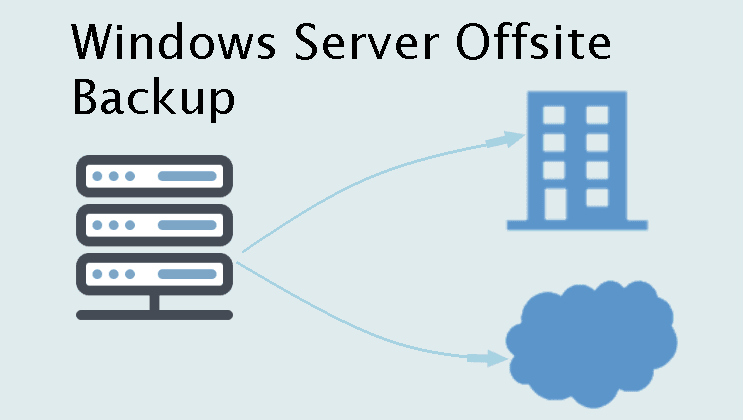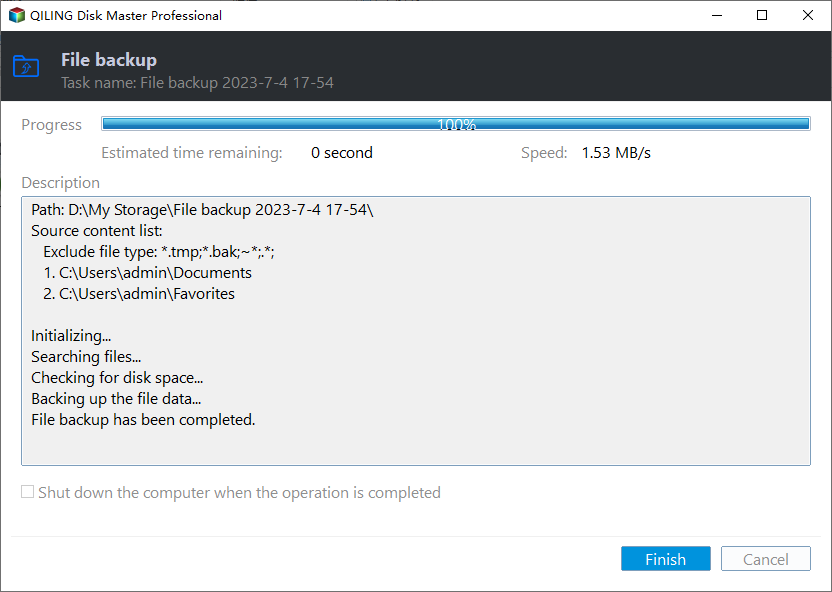How to Do Windows Server 2012/2016 Offsite Backup Easily
Onsite backup vs offsite backup
Onsite backup and offsite backup are two popular backup types that are widely used for data protection on Server operating systems.
In general, onsite backup means storing data backup on a local storage device, such as hard drives, CDs, USB flash drives, magnetic maps, etc. While offsite backup, also known as remote backup, means back up important data from or to a remote place usually via the Internet, or directly save backups to other physical places. For example, a NAS backup, network share backup or cloud drive backup.
Both of them have merits and shortcomings, and complement each other. Generally speaking, onsite backup is easier to get started and have a quick access when disaster happens, but easier to get lost as well. Remote backup may be a little complex but provides extra protection for important data.
In need of Windows Server offsite backup
When you make an onsite backup, the backups are usually stored near the backup source, even on the source machine. Therefore, it is vulnerable to computer virus, system failure, hard disk error, etc. What's more, in the event of natural disaster like earthquake, flood, fire, hurricane, etc, and some bad situations like suffer from robbery or theft, the entire computer, machine, or hard drives can be damaged or get lost.
From another perspective of view, offsite backup ensures stronger security for server. The server operating system such as Server 2012 or Server 2016 usually stores crucial business data and valuable customers' information, especially for smaller and medium companies. Keeping a remote backup helps minimize the downtime of business work and reduces economic losses to the largest extent.
Reliable tool for Windows Server remote backup
To create remote backup, you can use built-in backup utility - Windows Server Backup, it requires you to create a VHD or VHDX file with the help of Disk Management. For detailed steps, please visit Windows Server backup incremental to network share. And it can only keep one backup copy on the network drive.
To make this process easier and keep multiple backups, it's suggested to use third-party backup software - Qiling Disk Master Server. And you can enjoy the following advantages:
- It is able to back up files on the server computer from or to NAS, network share, or cloud drive with ease.
- It allows you to run backup task daily, weekly, monthly, event trigger or USB Plug in. And more specific, you could set backup date, time and intervals for this scheduled task.
- It is capable of backing up only changed files with incremental or differential backup feature. The previous one is the default option.
- It intelligentally manage backup disk space by deleting old backup image regularly.
In addition, it has user-friendly interface and is popular among thousands of users all over the world. Why don't you download it and have a try?
How to perform Windows Server offsite backup step by step
Make sure the source machine and target network share are in the same LAN if you'd like to back up to network drive. Also, connect the external storage in advance if you'd like to backup server to physical devices. This part takes file backup on Windows Server 2012 for example.
1. Install and run Qiling Disk Master Server edition. Click Backup tab and then File Backup.
Tip: You can also backup files to Qiling Cloud with the help of the Cloud Backup feature. It comes along with 1TB of free storage in 15 days after registering an Qiling account.
2. Edit the task name if you wish to. Then, click Files or Folder to select files.
3. Then, you can select files from local disk, network share, or NAS (make sure you have the stored path and password). If you select NAS/share, you'll see this picture. Click "Add Share or NAS Devices" option to go on.
4. Click the second box to add destination path. You can store files to local hard drive, network drive, NAS, or cloud drive. Enter the username and password when prompted.
5. Specify custom settings with the following three options. Finally, click Proceed to add or run the task.
- Backup Options: enable password encryption, email notification, and write comment for the task.
- Schedule Backup: choose backup basis from daily, weekly, monthly, event trigger, or USB plug in. The last one is recommended if your target disk is USB and you don't want to always keep it connected.
- Backup Scheme: specify backup method (full/incremental/differential backup) and backup strategies to delete obsolete backups while keeping the latest backups.
Tips:
- To restore files in the future, click Restore tab to start. Also, you can perform selective file restore with the Explore image feature.
- To backup from or to cloud drive, please install its related desktop app on the machine beforehand.
Special recommendation:
The family software of Qiling products, Qiling Centralized Disk Master, is able to create backup task and manage tasks for all remote computers that are in the same LAN from a central console (usually a server).
It supports backing system, disk, partition and files for all the client computers. And it allows you to run the backup task automatically in daily, weekly, monthly. The biggest difference is it supports SQL server backup.
If you have this need, get this best practice for business backup and create backup for all of your computers.
Summary
Windows Server offsite backup provides better protection for stored data on the hard drive, and Qiling Disk Master Server is responsible for making it simpler. With it, you can backup file, system, disk, or partition automatically and minimize the size of backup image with incremental or differential backup, automatic backup cleanup, etc.
As a matter of fact, this software is able to clone hard drive on Server 2003, 2008, 2012, 2016, and 2019 to new hard drive without reinstalling. All in all, whether you want to backup server computer or perform hard disk upgrade, it's a great option due to the complete features.
Related Articles
- Backup Data Offsite on Windows 10 to Protect Data | 3 Ways
You will learn how to backup data offsite in Windows 10 with the best offsite storage and 3 practical ways. - Top 2 Server Backup Solutions to Backup Server 2019 Safely
Try the following 2 server backup solutions to less downtime and recovery faster. Perform disaster recovery if something bad happened to your Windows Server. - How to Backup Files in Windows Server 2019 Easily (2 Ways)
Wanna backup files in Windows Server 2019 to prevent data from losing? Scroll down to get 3 professional Windows Server backup tools to help you. - How to Restore VHD File in Windows 2008 (R2) Server
If you want to restore VHD file in Windows 2008 (R2) server, but Microsoft does not find the backup image on network, please continue to see below and this article offers you 2 helpful methods.






